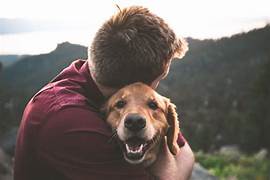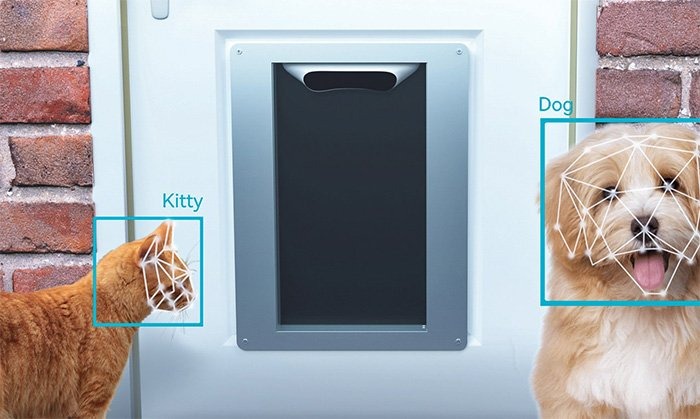
Top 3 Mistakes New Pet Owners Make.
Many new pet owners dive into the joy of companionship without realizing the depth of care pets truly need. From underestimating time commitments to skipping training and neglecting health essentials, small mistakes can lead to big consequences. This article uncovers the top three missteps and offers practical guidance to help you build a happy, healthy life with your furry friend.
🐶 Pet Star
46 min read · 18, Jul 2025

Introduction
Bringing a new pet into your home is an exciting and rewarding experience. The joy of a wagging tail, soft purrs, or chirping from a happy bird can fill your life with love and companionship. However, along with this joy comes immense responsibility. As a new pet owner, it’s natural to make mistakes due to lack of experience or misinformation. Some errors can be minor, while others may lead to long-term behavioral issues, poor health, or even loss of life.
This article explores the top 3 mistakes new pet owners make, why they happen, the potential consequences, and how to avoid them. By understanding these pitfalls, you can offer a healthier, happier, and more harmonious life for your furry (or feathery or scaly) friend.
Mistake 1: Underestimating Time, Commitment, and Lifestyle Compatibility
Why It Happens:
Most first-time pet owners are drawn to the emotional appeal—cute faces, playful videos online, or the idea of a loyal companion. What often gets overlooked is the daily commitment and lifestyle compatibility required to raise a pet.
Many people assume that pets are easy and require minimal upkeep, especially animals like cats, birds, or small dogs. However, each pet species—and even breed—has specific needs, energy levels, and behavioral patterns. Not understanding these can lead to regret, stress, and rehoming of the animal.
Consequences:
- Pets may be left alone for long hours, leading to separation anxiety or destructive behavior.
- Improper exercise or stimulation can cause obesity, depression, or hyperactivity.
- Owners may become overwhelmed and consider giving up the pet, leading to abandonment or overcrowded shelters.
- Untrained pets can create chaos at home, damaging property or harming themselves.
Prevention Tips:
- Research Before You Adopt: Study the breed/species thoroughly. Understand energy levels, grooming needs, health issues, and lifespan.
- Consider Your Routine: If you travel a lot, work long hours, or live in a small space, some pets may not be suitable.
- Start Small: If unsure, begin with lower-maintenance pets like hamsters, fish, or adopting an adult pet.
- Make Time: Schedule time for walks, play, training, and affection. Pets thrive on routine and connection.
Mistake 2: Inadequate Training and Socialization
Why It Happens:
Many new owners mistakenly believe that pets will naturally “behave” as long as they’re loved and fed. But love without structured training can result in poor behavior, anxiety, or even aggression.
Training and socialization should begin early—ideally from the moment your pet enters your home. Many owners delay this or use inconsistent methods that confuse the animal.
Consequences:
- Behavioral Issues: Chewing, barking, biting, scratching, and urinating indoors.
- Fear and Aggression: Lack of exposure to people, sounds, or other animals leads to fearful or aggressive responses.
- Disruption at Home: Pets may not obey basic commands, making them difficult to manage around guests or in public places.
- Injury Risk: Untrained pets might run into traffic, eat harmful objects, or attack strangers.
Prevention Tips:
- Begin Basic Training Immediately: Use positive reinforcement methods (treats, praise) to teach commands like “sit,” “stay,” and “come.”
- Enroll in Obedience Classes: Professional trainers can guide you and your pet in a structured manner.
- Socialization Is Crucial: Expose your pet to various people, environments, and other animals gradually but consistently.
- Set Boundaries: Be firm but kind. Pets thrive in environments where rules are clear.
Mistake 3: Poor Nutrition and Skipping Veterinary Care
Why It Happens:
Feeding table scraps, choosing the cheapest food, or failing to visit a vet often are some of the most common missteps. Many owners assume pets can thrive on any food or only need medical attention when they fall ill.
Nutrition and health care are fundamental pillars of responsible pet ownership. Ignorance in this area can severely affect the pet’s lifespan and quality of life.
Consequences:
- Obesity or Malnourishment: Incorrect food portions or poor-quality food lead to severe health issues.
- Allergic Reactions: Some pets have food sensitivities or dietary restrictions.
- Missed Vaccinations: Increases the risk of preventable diseases like rabies, distemper, or parvo.
- Untreated Conditions: Parasites, dental issues, or chronic pain often go unnoticed without regular checkups.
Prevention Tips:
- Choose Quality Pet Food: Select food based on species, age, size, and health condition. Consult your vet.
- Avoid Human Food: Some human foods are toxic to pets—like chocolate, grapes, onions, or xylitol.
- Schedule Vet Visits: Regular annual exams, vaccinations, and parasite prevention are essential.
- Pet Insurance: Consider enrolling in a pet insurance plan to manage unexpected medical costs.
Other Common Mistakes Worth Noting:
While the above three are the most critical, others include:
- Impulse Adoptions: Adopting a pet on a whim, especially during holidays or trends.
- Neglecting Grooming: Some pets require regular brushing, nail trimming, or dental care.
- Ignoring Mental Stimulation: Bored pets often misbehave. Toys, puzzles, and playtime are vital.
- Assuming All Pets Are the Same: Every pet has a unique personality—what works for one may not work for another.
Bringing a new pet into your home can be a deeply joyful experience, but it also comes with enormous responsibility—something many new pet owners unfortunately underestimate, leading to several avoidable yet common mistakes. One of the most frequent and significant errors is underestimating the time, energy, and commitment a pet truly requires. Many people adopt animals based on impulse or emotion—perhaps they saw a cute video online or a friend just got a dog—and assume the pet will easily adapt to their existing lifestyle. However, every pet, whether a dog, cat, bird, or reptile, comes with specific needs: dietary, emotional, behavioral, and environmental. A dog might require multiple walks a day, playtime, and training; a cat may need a clean litter box, mental stimulation, and space to climb and hide; birds often require regular social interaction and stimulation to avoid boredom or aggression. Without a clear understanding of these requirements, new pet owners often find themselves overwhelmed, and pets, in turn, may suffer from neglect, stress, or behavioral problems. This disconnect between expectations and reality can result in a breakdown of the human-animal bond, leading to pets being surrendered to shelters or abandoned altogether. Another core mistake is neglecting early training and socialization. Many new pet parents assume their pets will simply "learn" how to behave, failing to realize that proper behavior must be taught and reinforced consistently. Puppies that aren't taught basic commands or house-training may grow into adult dogs with problematic habits; cats not introduced to scratch posts may ruin furniture; birds that aren't socialized might become territorial or aggressive. Training is not just about obedience—it's about building trust and establishing communication between pet and owner. Socialization is equally vital, especially for animals like dogs who are naturally social. Without early exposure to various people, environments, and situations, pets can develop fears, anxiety, or even aggression, making them difficult to manage later. Positive reinforcement training and early exposure to other pets, humans, and experiences help animals become confident and well-adjusted, and professional training classes can be invaluable in setting up both pet and owner for success. The third major mistake is poor nutrition and neglecting regular veterinary care. Many first-time owners think feeding their pet cheap commercial food or occasional table scraps is sufficient, not realizing that a proper diet is foundational to a pet’s long-term health. Each species and breed has specific dietary needs; for example, dogs and cats require different nutrient profiles, and within those categories, factors like age, activity level, and health conditions further impact what food is appropriate. Poor nutrition can lead to obesity, diabetes, organ issues, and dull coat quality, among other problems. Additionally, failing to bring pets to the vet for regular checkups, vaccinations, and preventive care (like parasite control and dental hygiene) can result in serious, preventable health issues. Many illnesses in pets progress silently; by the time symptoms appear, they might already be advanced. Early detection through regular vet visits can dramatically improve outcomes and prolong a pet's life. Moreover, new pet owners often skip spaying or neutering, unaware that it not only prevents unwanted litters but also reduces the risk of certain cancers and behavioral problems. These three mistakes—underestimating lifestyle impact, neglecting training and socialization, and ignoring health and nutrition—are often interconnected. A poorly trained pet may cause frustration, leading the owner to neglect it emotionally or physically; poor nutrition may result in lethargy or hyperactivity, which affects training; an unsocialized pet may be harder to take to the vet, causing gaps in medical care. However, these mistakes are not made out of cruelty—they stem from a lack of preparation or misinformation. Thankfully, they are also very much avoidable. New pet owners should thoroughly research the species and breed they plan to bring home, evaluating whether their daily routine, space, and lifestyle align with the pet’s needs. Reading books, watching reputable videos, and talking to vets or experienced pet owners can offer realistic insight. It’s essential to build a structured environment for the pet from day one, with consistent training, clear boundaries, and positive reinforcement. Making time for play, exercise, and bonding helps strengthen the relationship and supports both behavioral and emotional well-being. On the health front, choosing high-quality pet food suited to the animal’s age, weight, and medical history is vital. Routine vet visits shouldn’t be skipped, even if the pet seems healthy—prevention is far more effective and economical than treatment. Also, avoiding the temptation to feed pets from the dinner table can protect them from toxic foods and teach better mealtime manners. Finally, pet owners must remember that pets, like people, have unique personalities and may need time to adjust. Patience, empathy, and consistency go a long way in helping them feel safe, loved, and understood. By avoiding these top three mistakes and embracing a well-informed, proactive approach, new pet owners can provide a happy, healthy, and fulfilling life for their companions while enjoying the profound joy and comfort pets bring into human lives.
Becoming a pet parent is a joyful yet transformative experience—one filled with love, laughter, challenges, and life lessons—but many first-time pet owners unknowingly fall into traps that can affect both their own well-being and that of their new companion. One of the most common mistakes new pet owners make is underestimating the time, effort, and long-term commitment a pet truly requires. Many people decide to get a pet impulsively, enchanted by an adorable puppy’s eyes or a kitten’s soft purr, without considering how that cute ball of fur will grow into a living being with complex emotional, physical, and behavioral needs. Every pet—whether it’s a dog, cat, rabbit, bird, reptile, or small mammal—requires not just food and water, but attention, structure, exercise, and emotional engagement. Dogs especially need daily walks, training, and social interaction, while cats may need vertical spaces, litter maintenance, grooming, and mental stimulation. If you're someone who works long hours, travels frequently, or doesn’t enjoy daily physical activity, adopting a high-energy dog might not be a wise choice. Unfortunately, many people only realize this mismatch after bringing the animal home, which can result in neglect, frustration, behavioral issues in the pet, and in worst cases, abandonment or surrender to shelters. This leads into the second major mistake: failing to train and socialize the pet properly during the early stages. New owners often assume that a loving environment will naturally lead to a well-behaved pet, but this is a dangerous myth. Without proper, consistent training, even the most affectionate pets can develop problematic behaviors. For dogs, failure to teach basic commands such as sit, stay, or recall can lead to a pet that is difficult to control, particularly in public or around guests. Cats may begin scratching furniture or avoiding the litter box, while birds may develop biting behaviors or excessive squawking if they are not handled correctly. Socialization is equally critical; animals that are not exposed to different people, environments, sounds, and other pets during their developmental stages often become fearful or aggressive later in life. This fear can manifest in unpredictable ways—biting, hiding, shaking, or even running away when stressed. Training and socialization are not luxury activities—they are foundational aspects of raising a stable, confident, and emotionally healthy pet. Positive reinforcement, patience, and professional guidance (such as enrolling in obedience classes or hiring a trainer) can help lay the groundwork for a respectful, trusting relationship between pet and owner. Ignoring this vital step often leads to pets being labeled “bad” or “aggressive” when, in reality, they are simply untrained and misunderstood. Alongside time commitment and behavior training, a third critical area where new pet owners often falter is in the realm of nutrition and veterinary care. Feeding your pet is not as simple as giving leftovers from your plate or choosing the cheapest bag of kibble on the shelf. Each species, breed, age, and health condition has specific dietary requirements, and providing inappropriate food can lead to a host of issues including obesity, diabetes, skin allergies, poor coat condition, digestive problems, and even life-threatening illnesses. Many new owners are unaware of what foods are toxic to pets—such as chocolate, grapes, onions, xylitol, and caffeine—which can cause serious harm or death. Furthermore, failing to schedule regular vet visits is a major oversight. Preventive care, including vaccinations, flea and tick treatments, spaying or neutering, and dental care, is essential to your pet’s long-term health and well-being. Many diseases in pets progress silently, and by the time symptoms appear, they are often severe and costly to treat. Pet insurance can help ease the financial burden of emergencies, but nothing replaces the value of routine, preventive checkups. Additionally, new pet owners may not recognize subtle signs of distress or illness, such as changes in appetite, lethargy, or behavioral shifts, and may delay seeking help until it’s too late. This neglect often stems not from a lack of love but from a lack of awareness or preparedness. The good news is that all these common mistakes are preventable with education, empathy, and a willingness to adapt. Responsible pet ownership begins long before the pet enters your home—it begins with honest self-assessment. Do you have the time to walk a dog three times a day? Are you willing to clean a litter box daily or offer a rabbit enrichment and space to roam? Can you afford veterinary bills and quality food for the next 10–20 years, depending on the animal’s lifespan? It’s also important to research specific breeds or species, as some have higher energy levels, grooming needs, or medical predispositions than others. Setting up a pet-friendly environment, investing in toys and supplies that provide mental stimulation, establishing a consistent routine, and building trust through positive interactions are all critical components of successful pet ownership. Moreover, patience is key—pets, like humans, require time to adapt to new environments and routines. They may make mistakes, act out, or struggle with anxiety, especially in the early weeks. It’s up to the owner to offer guidance, reassurance, and structure—not punishment or abandonment. Many behavioral problems can be corrected through understanding and professional help rather than anger or rehoming. Ultimately, pets are not accessories or temporary amusements; they are sentient beings who rely entirely on us for their health, happiness, and survival. By avoiding the top three mistakes—underestimating commitment, neglecting training and socialization, and providing inadequate nutrition and health care—new pet owners can foster a rewarding, lasting bond with their companions and ensure a life full of love, trust, and joyful moments for all involved.
Conclusion
A pet is more than just a companion; it’s a living being with emotional, physical, and psychological needs. By avoiding the top mistakes discussed above, you not only ensure your pet lives a longer, healthier life but also deepen the bond between you.
Owning a pet should never be a decision made lightly. However, if you commit fully, educate yourself, and offer love guided by knowledge, the rewards are boundless.
Q&A Section
Q1 :- What is the most common mistake new pet owners make?
Ans:- The most common mistake is underestimating the time, energy, and lifestyle adjustments required to care for a pet properly.
Q2 :- Why is training important for pets?
Ans:- Training teaches pets acceptable behavior, strengthens the owner-pet bond, and ensures the safety and well-being of both pet and owner.
Q3 :- Can poor diet affect my pet’s health seriously?
Ans:- Yes, poor diet can lead to obesity, nutritional deficiencies, digestive issues, and other long-term health problems.
Q4 :- How early should I start training my pet?
Ans:- Training should begin as soon as the pet arrives home, even for very young animals, using gentle and positive reinforcement techniques.
Q5 :- How often should I take my pet to the vet?
Ans:- Pets should visit the vet at least once a year for routine checkups, vaccinations, and preventive care. More frequent visits may be needed for puppies, senior pets, or those with health issues.
Similar Articles
Find more relatable content in similar Articles

Sustainable Pet Products: What to Look for in 2025...
As sustainability becomes a ce.. Read More

Smart Homes for Pets: Automated Feeders, Doors, and Mo..
As smart home technology advan.. Read More

How Climate Change Affects Wild and Domestic Animals...
Climate change is dramatically.. Read More

How Pets Strengthen Family Bonds...
Pets are more than just compan.. Read More
Explore Other Categories
© 2024 Copyrights by rPets. All Rights Reserved.